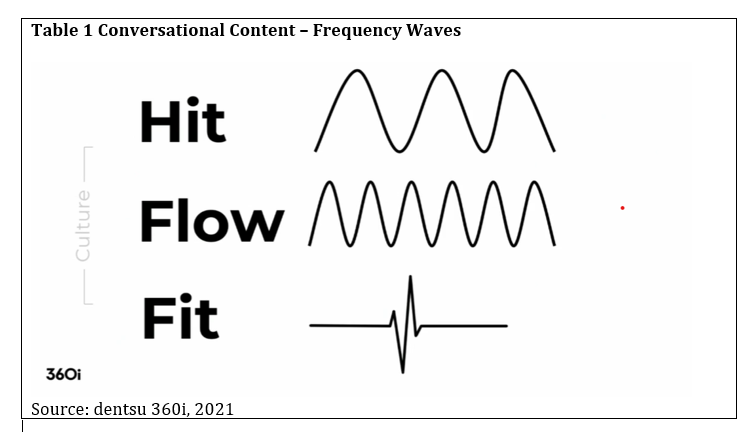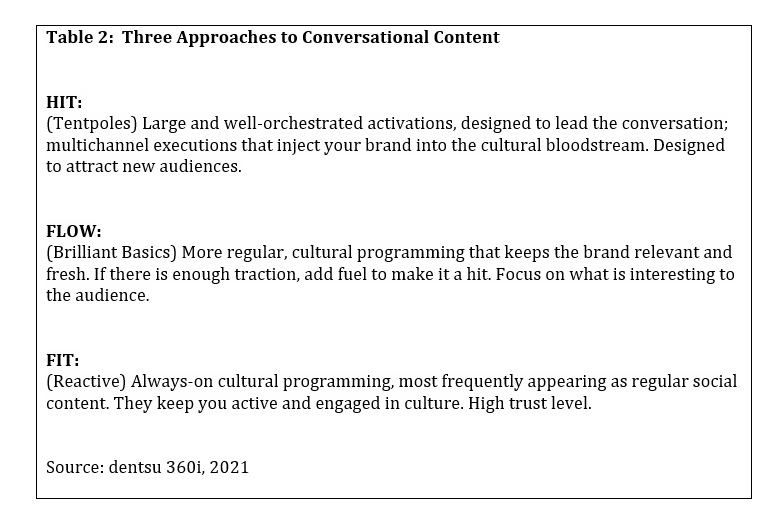How to Capture Mindshare and Attention the dentsu Way

There's a marketing question that's been around for decades and never seems to go away: which part of media budgets really moves the needle? Marketers are on a daily sprint to answer that at the same time they try their best to stay current on trends related to technology, social media and media strategy.
Those challenges were very much on the minds of several dentsu leaders who shared a host of insights recently at Advertising Week New York. With a client roster that includes brands like Procter & Gamble, Pfizer, General Motors and Microsoft, they have plenty of thoughts about what drives a strong return on investment.
This is the first article in a two-part report about the dentsu leaders' remarks. The following focuses on three areas: streaming, podcasting and social media strategies.
Balancing Scale and Quality in Streaming
A top media priority at dentsu is "connecting the dots, and synergizing across all platforms for our clients," according to Brad Stockton, the company's Senior Vice President, U.S. National Video Innovation. He pointed to two key considerations for successful streaming partnerships: the "ability to be highly targeted with a robust level of fidelity" and "creating an element of partnership across data and premium content that is brand safe and engaging."
Increasingly, audiences are becoming more accessible to marketers through the growing number of ad-based video on demand (VOD) services, which have gained significant viewership due to cord cutting.
"Content does matter in the streaming space," Stockton noted. "TV can learn from digital, and the digital space can learn from TV, especially when it comes to transparency and measurement best practices."
With over 550 new shows produced in 2021, Stockton reminded attendees that "with the proliferation of so much data and platforms, we can't lose line of sight on what is brand suitable and brand safe." He noted that ViacomCBS, Disney and NBCU are among the premium media brands that have a track record of high-quality, brand-safe content.
A big question relates to where content ultimately wind up when it hits streaming platforms, not necessarily where it will premiere.
In terms of attribution, Stockton emphasized that over the top opportunities "do well in terms of measurement by platform. But what is missing is interoperability across platforms. Advertisers want one view across all the streamers."
He emphasized it is an arms race about "scale, creativity and brand safety" as the players continue in their quest for streaming dominance in advertising.
Power of Immersive Podcasts
Podcasts are slated to reach $1 billion in ad sales by the end of 2021, with an expected doubling by 2023. While the nonfiction two-person podcast has become a norm, there is an immersive quality and depth of engagement that is intrinsic to scripted fiction podcasts. They "tap into the imagination like no other format," according to Doug Rozen, CEO Americas at dentsu Media, Americas.
At dentsu, the new audio partnership between Sonos and the podcast Blackout represents a perfect match, he said. Sonos, the high-end speaker company, recently refreshed its brand strategy with an ambition to be perceived as more accessible, targeting 100 million people by launching "Feel More," its biggest-ever ad campaign.
Blackout, starring Academy Award winner Rami Malek, represented the type of "sound engineering and depth of experience" that Sonos is renowned for, Rozen explained. It is an apocalyptic thriller where a small-town radio DJ is fighting to protect his family and community after the power grid goes down nationwide, upending modern civilization.
For Rozen, it is a timely reminder to not treat podcasts as an afterthought "add on" to a media plan, but rather as an "entry point into the consumer journey, going beyond pre, mid and post roll."
Rozen also noted that "exposure is not difficult to achieve. What is particularly challenging is creating the right experiences that deeply impact intention and emotion." The industry often looks at how to minimize ad-skipping. With podcasts, engagement can be captured by content rewinds -- the propensity for listeners to relisten and revisit parts of a story they feel compelled to experience again.
"Creative drives media, and media drives creative," Rozen said, adding that the industry needs to stop the artificial separation of the two most powerful forces to drive consumer engagement and fan following.
Leveraging Social for Cultural Moments
Social media and search data can help us identify and monitor the big moments and movements that define our times, according to Abbey Klaassen, President, Business Leadership, East at dentsu, and Kristin Maverick, Vice President, Social and Influencer Marketing at the dentsu digital agency 360i.
They highlighted ways to spot trends and conversations -- from linking OREO's to Game of Thrones to Nutter Butter's banter on Squid Games -- and how to use the insights to inform everything from a TikTok post to a new brand extension. The best marketers are thinking of "total social," according to Klaassen. That means relying on both organic and paid social to drive engagement and brand actions.
Organic social allows for testing and learning, the experimentation of fandoms and brand relevance. With search volume as a proxy for share of voice, it can provide important indicators of brand cultural vitality. According to Klaassen, all brands need to start by asking two questions:
- What is timeless about the brand?
- What is a timely message about the brand?
After asking these questions, the dentsu team ask an extensive array of questions to truly understand the direction of the cultural conversation. Among them:
- Who is in your current and future audience?
- What interests the audience and what do they respond to?
- How do you want to show up? What can you do to stand out?
- Where don't you want to go/comment on?
There are three frameworks for conversational content that incorporate cultural bursts of information according to the dentsu social media team, as reflected by Table 1 and 2.


In addition to the Hit-Flow-Fit framework, dentsu clients receive a daily "Culture Task Force" newsletter that acts as a tear sheet for the social media team, capturing what is brewing that day in terms of news and pop culture.
Both social media and search data are powerful sources for marketers; they can serve as a credible and authentic pulse of what's on people's minds. Fueled by trillions of searches and social media likes, this type of data represents a mirror into the collective interest and intention of people across the globe.
This is a powerful dataset that dentsu has helped marketers tap into so they can use the insights they discover to inform marketing, creative, media and product ideas.
"Brands and marketers need to live in the [social media] feed," said Kristin Maverick, Vice President, Social Influencer at 360i. "If they fail, their brands risk being seen as irrelevant, ignorant or just out of touch."
Consumers are "demanding cultural fluency, authenticity, and meaningful experiences from brands," added Mark Prince, Senior Vice President, Head of Economic Empowerment at dentsu. "We need to go beyond just delivering the audience, reach and frequency, but rather to challenge the status quo and focus on delivering both growth and good."
Click the social buttons to share this story with colleagues and friends.
The opinions expressed here are the author's views and do not necessarily represent the views of MediaVillage.com/MyersBizNet.


